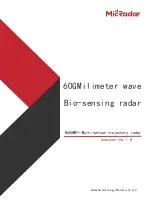
MM-010019-001, Rev. B
57
It is recommended that a test talk group be allocated for this testing. This same group
should be used during the antenna test procedure which is presented in the subsequent
section.
GPS ANTENNA
CONNECTION
NOT SHOWN.
Wattmeter
N-Type to
TNC-Type Adaptor
TNC Male to N Female
Coaxial Jumper Cable
Slug
(25 W, 400–
1000 MHz)
Dummy
Load
Vehicle-Mounted
700/800 MHz
Antenna
IN
OUT
Radio’s Antenna
Cable
TNC Female
Connector
M7200
Mobile Radio
(Rear View)
Radio’s DC
Power Cable
Installation’s DC
Power Cable
From 13.8-Volt
Fused Power Source
3-Pin
Connectors
Radio’s I/O Cable
44-Pin
Connectors
SERIAL
MODEM
GPS
Personal Computer
(PC) Running
Terminal
Application
COM1 Port
Serial Programming Cable
MAMROS0055 (or equivalent)
Full-Data I/O Option Cable
1000022242-0001
Or
Programming Option Cable
1000022242-0002
(Has the “SERIAL” connector only)
9-Pin
Connectors
No GPS/MODEM connection
required when programming.
Control Head CAN
cable connection
and CAN
Terminator not
indicated.
CAN Port Connectors
(2 places)
NOTE:
The PC and
the related serial cable
connections are not
required for testing.
They are shown here
for reference only.
Figure 16-1
:
Wattmeter Connections for Antenna System Tests
5.
Position the wattmeter’s slug to measure forward RF output power. Rotate it if necessary. The arrow
on the face of the slug must point away from the radio and towards the dummy load for forward
power measurements.
6.
Set the wattmeter to measure peak RF power.
7.
Key the radio’s transmitter via the microphone’s PTT button.
8.
Compare the wattmeter’s reading with the target RF output power range of
11.8 – 20.0 watts.
Transmit only for as long as needed to take the measurement, then immediately
disable the transmission.








































